I previously profiled the palette of Lisa Spangler (@sideoats on Instagram), a watercolor artist based in Austin, Texas who pioneered the concept of “nature spots,” swatches of colors in the natural world. Nature spots can be less intimidating to paint than full scenes, especially if you’re on the go, but can be a great way to connect with your local environment through color. Over the month of January, Lisa ran the #naturespotchallenge on Instagram, where she challenged followers to go out every day in the month of January and paint a nature spot. I took her up on it!
It was challenging to accomplish this every day for a month – especially in January, which is a cold, gray, dreary month in Massachusetts – but I managed! A few times I did them indoors, through the window or using materials brought in from outside, but most of the time I did them outside, even when it was raining or snowing. It was a great excuse to make sure I got some outdoor time each day, and it truly helped me to hone my observational skills and open my eyes to the splashes of color that are there, even in a fairly muted landscape.
Post-January, I want to keep making Nature Spots! I’m not sure I’ll continue doing this every day, but I do think that I want to come back to it from time to time, especially as the seasons change. I found myself longing to do nature spots for other times of year and conditions; for example, spring natures spots of flowers, or fall nature spots of leaves.
All My Nature Spots
Here’s my complete set of Nature Spots!
Week 1
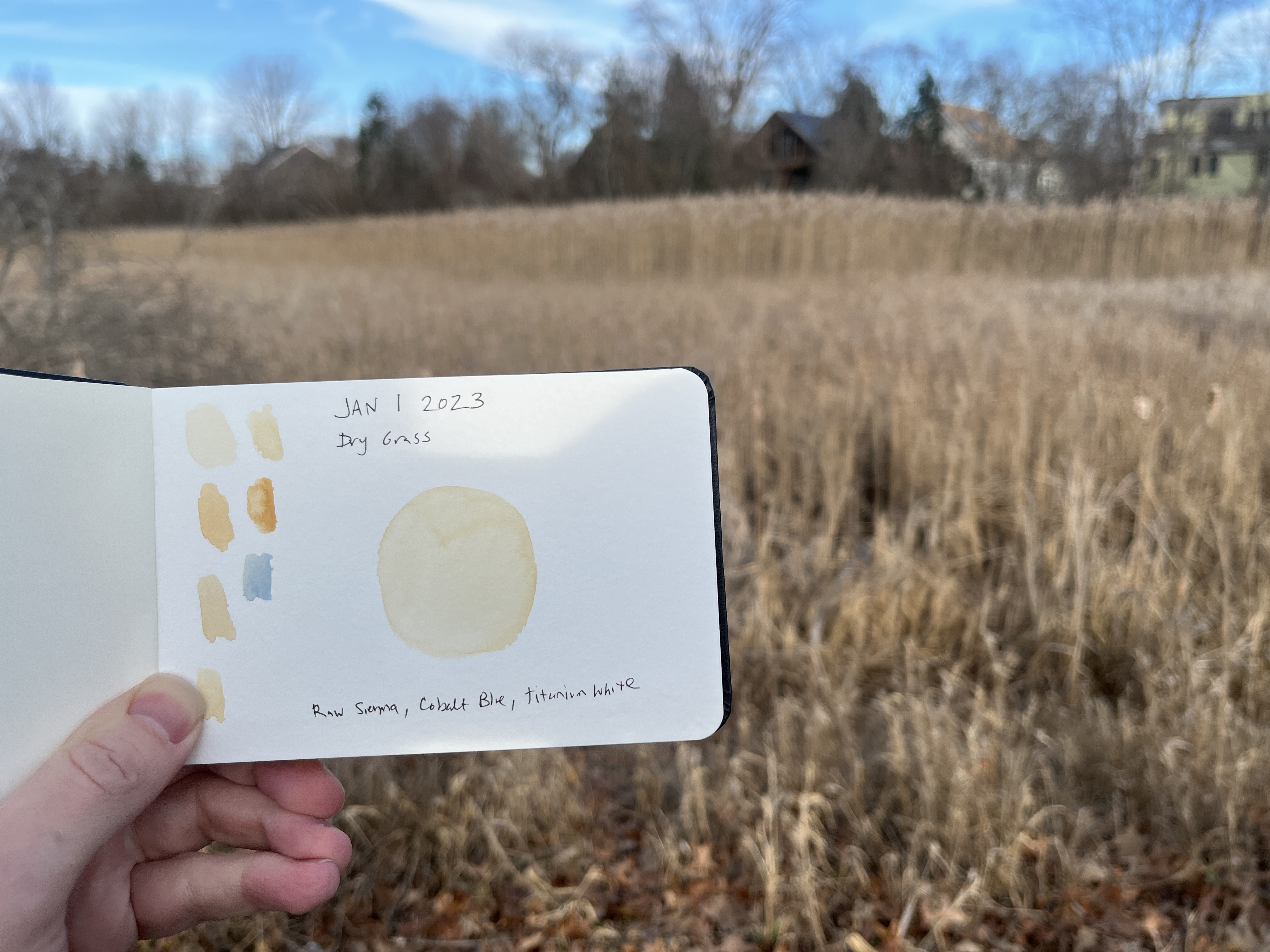



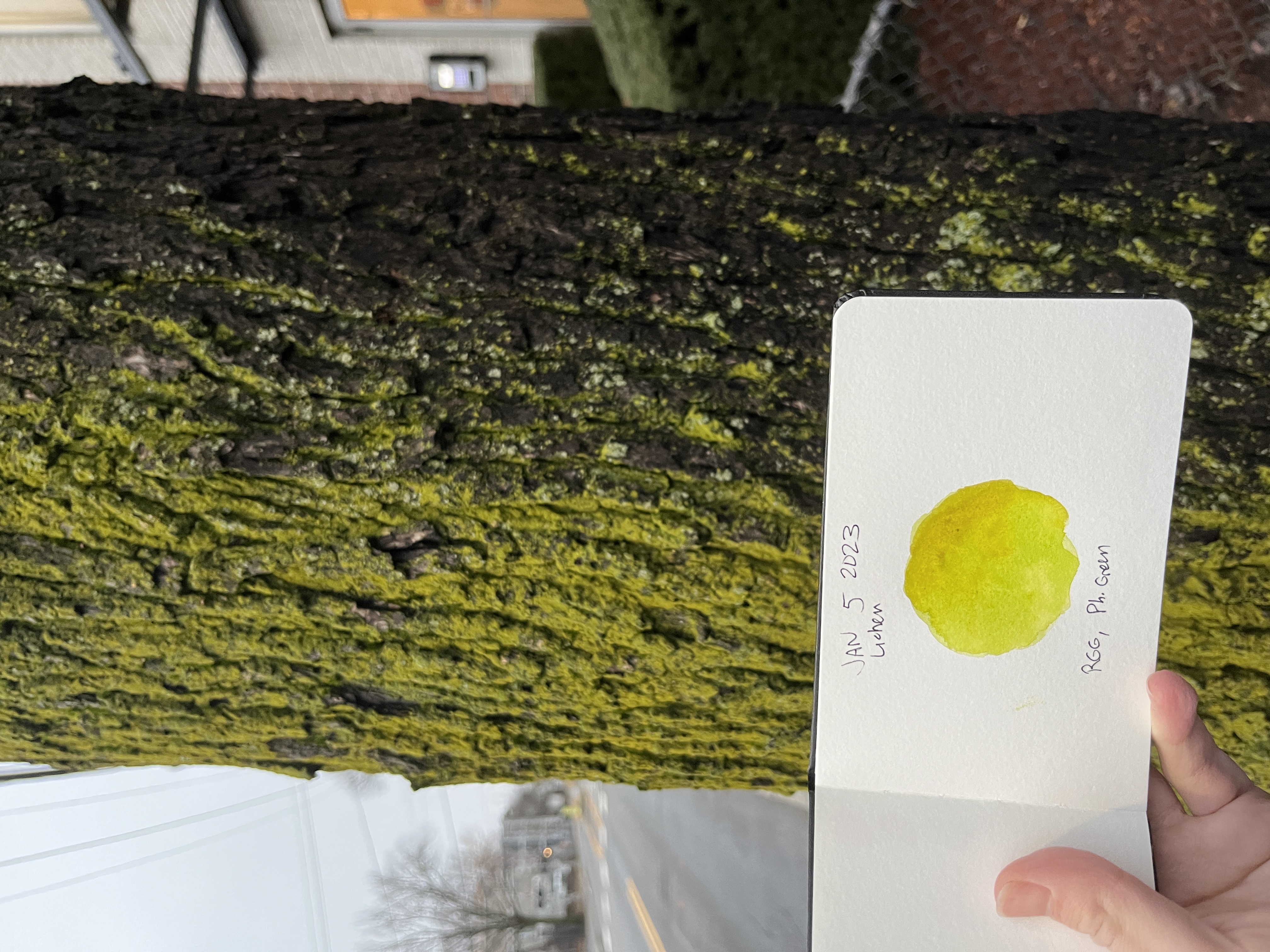
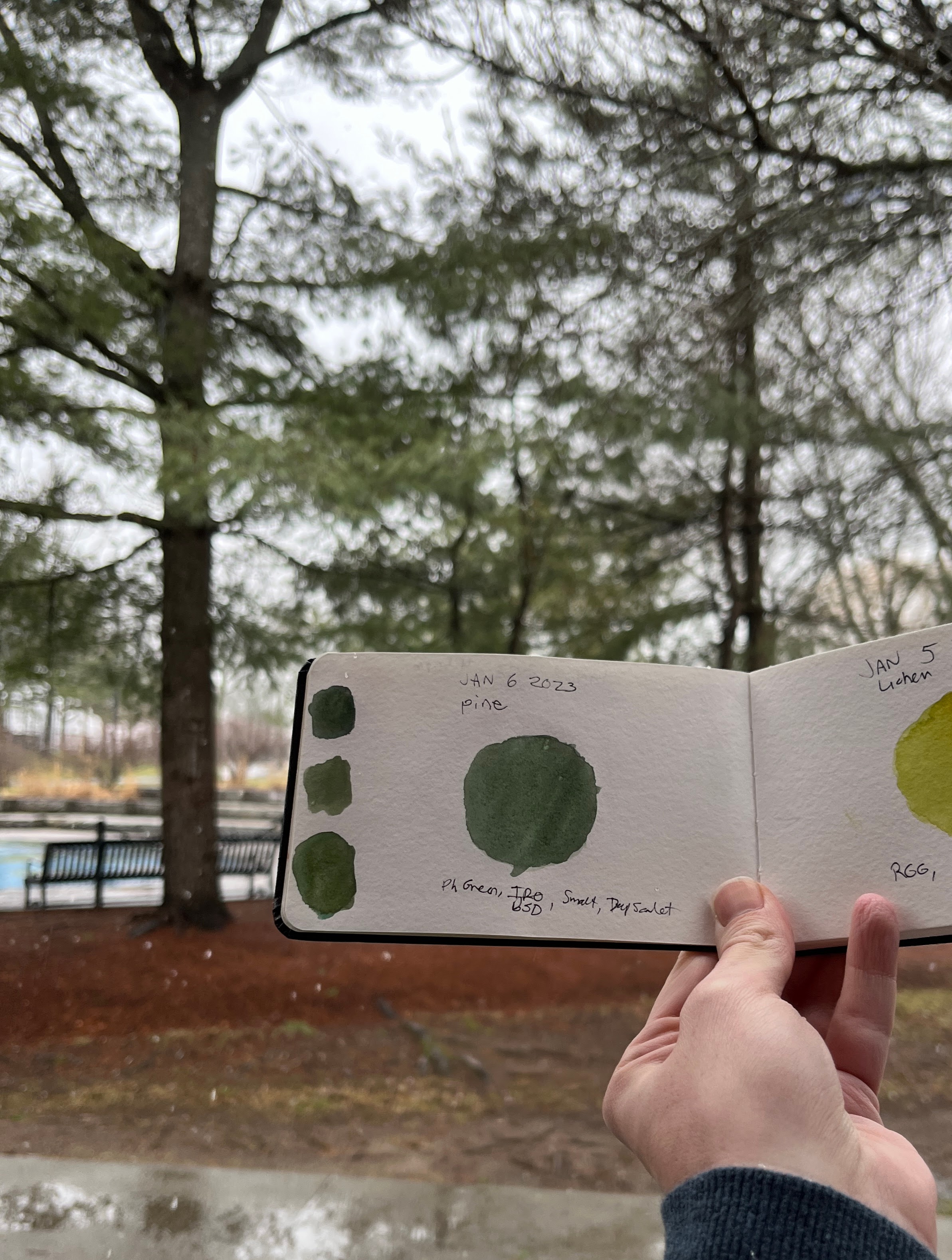

Week 2







Week 3







Week 4

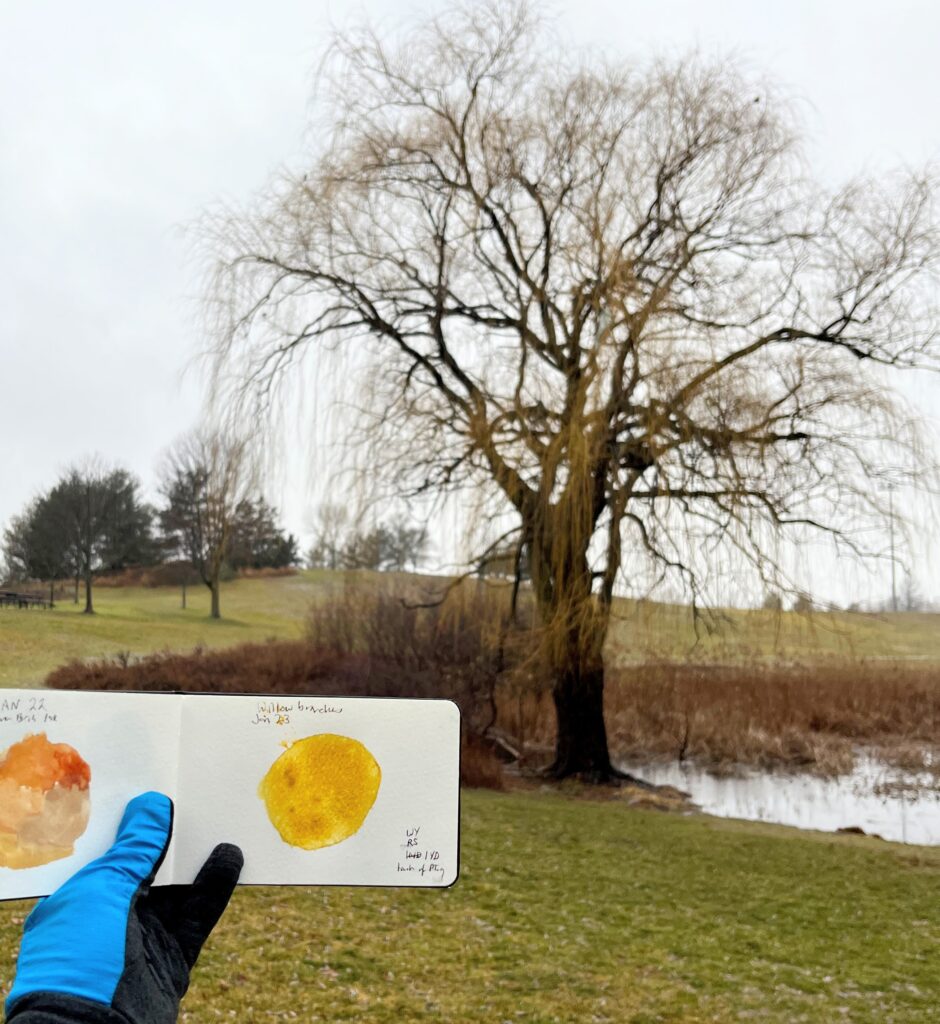



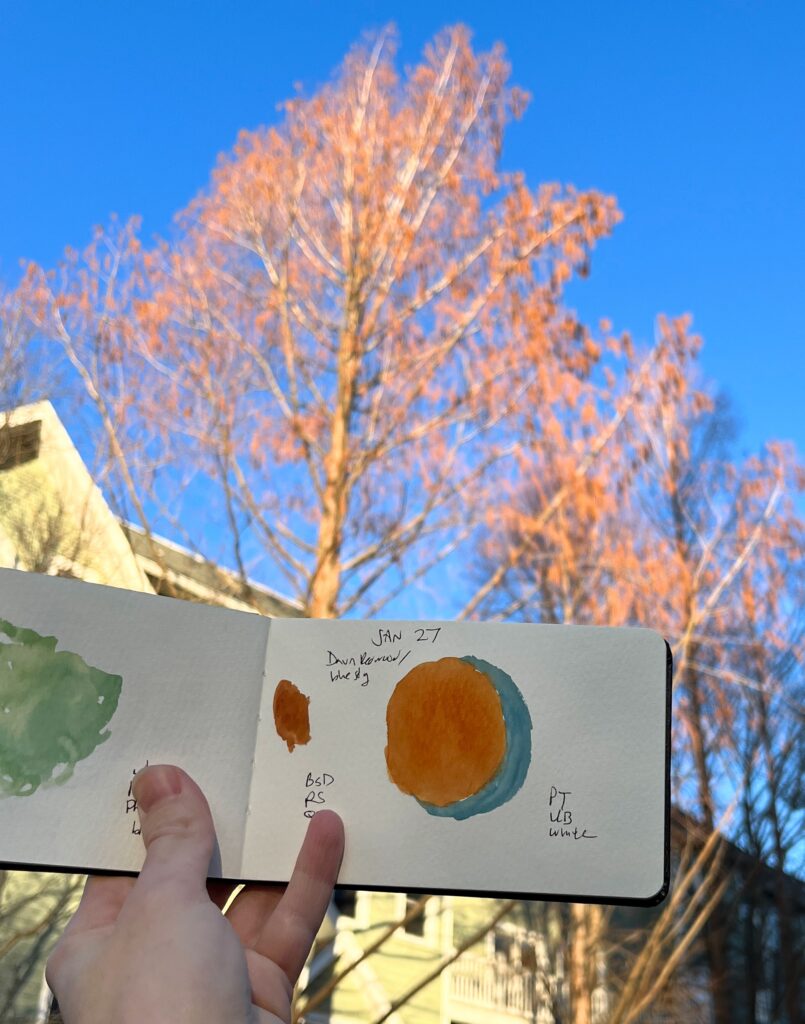

Week 5



My Kit

I used my travel kit (small Art Toolkit with water brush and Pocket Palette), but I made a few palette changes during the course of the month. You would think after all the time I’ve spent thinking about color, that I would know what colors to use, but there’s a difference between theory and practice – and mixing up real-life colors every single day from life certainly gave me practice!
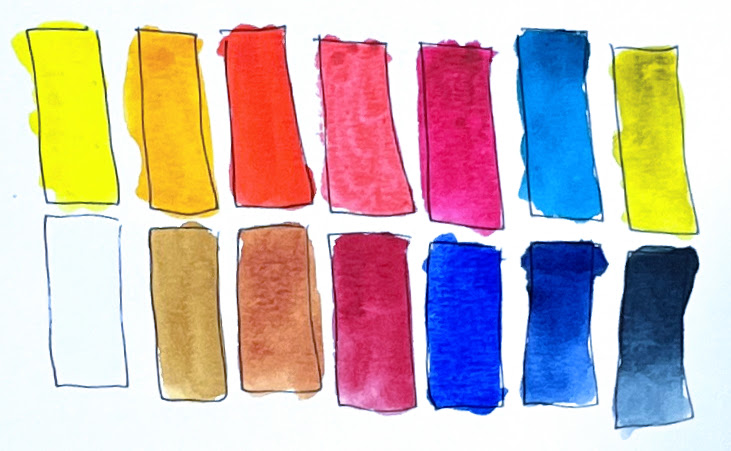
Favorite Nature Spot Colors
Here are my favorite colors that I used the most throughout the month.
1. Ultramarine Blue
Specific Paint: Da Vinci – Ultramarine Blue (PB29)
Days Used: 18/31
Useful For:
- Blue skies (with cyan and white)
- Cloud grays
- Neutralizing earth tones
- Snow shadows
I feel like I unlocked the power of Ultramarine Blue this month, especially since I didn’t have competing Cobalt Blue on my palette.
2. Earth Orange
Specific Paint: At various points in the month, I used either DV Burnt Sienna Deep (PR101) or DS Transparent Red Oxide (PR101). Both are good and they can basically be used interchangeably. BSD is a bit brighter and orangier – similar to the hue of Quin Burnt Orange – whereas TRO is a bit more muted with wider value range.
Days Used: 15/31
Useful For:
- Mixed browns and grays, e.g. tree bark (with Ultramarine Blue)
- Orangey tones in tree bark (e.g. River Birch, sunlit Dawn Redwood)
- Dry pine needles
- Rusty spots in dry leaves
- Robin’s breast
3. Earth Yellow
Specific Paint: DV Raw Sienna (PBr7)
Days Used: 13/31
Useful For:
- Dry grass (with Ultramarine Blue and sometimes white)
- Muted green mixes
- Muted oranges (e.g. dry pine needles) with Earth Orange
I initially came to love Raw Sienna in the desert and found it’s also a wonderful winter color! I find it’s easier to make dry grass color with Raw Sienna than with Yellow Ochre or MANS, even though those colors are more similar to the actual color of dry grass. I struggle to find the right mixer to add to YO or MANS to make it just a bit grayer. RS, being a bit too orange, is easily neutralized with a bit of my Ultramarine Blue.
4. Primary Cyan
Specific Paint: At various points, WN Winsor Blue (PB15:3), DV Prussian Blue (PB27), or WN Phthalo Turquoise (PB16); Phthalo Turquoise was the most successful!
Days Used: 11/31
Useful For:
- Sky blues (with Ultramarine and white)
- Mixed greens for leaves, conifer needles, grass, moss, etc.
Phthalo Turquoise was a breakthrough! Winsor Blue felt too bright and Prussian Blue too dull, but Phthalo Turquoise hit the sweet spot of mixing luscious greens and getting a nice deep value range without looking too neon-y. By the end of the month, I had dropped Winsor Green (PG7) from my palette because I was preferring the greens I mixed with Phthalo Turquoise!
5. Primary Yellow
Specific Paint: At various points, SH Aureolin (PY151); MI Green Gold (PY150); WN Winsor Lemon (PY175); WN Winsor Yellow (PY154). The more middle-toned Winsor Yellow was most successful, as the cooler yellows mixed greens that were too bright/neon-y.
Days Used: 10/31
Useful For:
- Mixing yellow-greens and muted earthy yellows (yellower than Raw Sienna)
- Bit of glow in sunset skies
6. White
Specific Paint: SH Titanium White (PW6) Gouache
Days Used: 9/31
Useful For:
- Pastel sky blues; with Ultramarine & Phthalo Turquoise
- Adding a chalky, greyed-out quality to dry grass; with Raw Sienna & Ultramarine
- Opaque, pastel lichen on top of tree branches; with Rich Green Gold & Phthalo Turquoise
- Wet and dry sand; with Raw Sienna and/or earth orange
- Heavy gray clouds; with palette mixes
7. Coral
Specific Paint: DS Quinacridone Coral (PR209)
Days Used: 8/31
Useful For:
- Sunsets, sunsets, sunsets!
8. Yellow-Orange
Specific Paint: HO Isoindolinone Yellow Deep (PY110) or DS Hansa Yellow Deep (PY65). I go back and forth, but in the end I settled on PY110 as being the more appropriate mixer for the other colors in my palette.
Days Used: 8/31
Useful For:
- Orange-looking tree bark
- Sunset skies
- Warm green mixer (with Phthalo Green or Phthalo Turquoise)
I used this a lot but I’m not sure it was really required. In many cases I could have used Raw Sienna (e.g. for mixing warm greens), or a mix of scarlet and yellow.
9. Scarlet
Specific Paint: DS Deep Scarlet (PR175) or SH Geranium Red (PR242). I think a bolder scarlet like the latter, or Pyrrol Scarlet (PR255), is more broadly useful.
Days Used: 7/31
Useful For:
- Neutralizing greens; toning down greens that are too bright
- Mixing bold middle reds (e.g. holly berries) with crimson
- Muted purple-gray clouds/snow shadows with Ultramarine
10. Rose
Specific Paint: DV Red Rose Deep (PV19)
Days Used: 6/31
Useful For: Mixed browns/grays with a purple tone (e.g. red pine bark, clouds).
Not used in winter as much as normal, but this is always a good one to have on the ol’ palette.
11. Rich Green Gold
Specific Paint: DS Rich Green Gold (PY129)
Days Used: 5/31
Useful For: Mixing glowing yet naturalistic greens, esp. moss & lichen
Another one I feel like I came to appreciate this month. I actually only had it on my palette for about a week out of the month, but I used it a lot during that time. It’s the perfect color for the moss that’s everywhere on tree bark, and it also mixes wonderful greens with Phthalo Turquoise that are bold and deep without being too in-your-face or yellowy.
12. Crimson
Specific Paint: HO Pyrrole Rubin (PR264)
Days Used: 4/31
Useful For:
- Mixing bold reds with scarlet (e.g. holly berries)
- Dark foresty greens (e.g. holly leaves)
- Mixed deep red-browns e.g. dogwood branches
- Bricks (I tried to mainly stick to natural subjects but this was where moss was growing)
This is a new one to me, and it’s great for those deep red tones of winter. I usually use Alizarin Crimson Quinacridone before this, and I love that color, but it’s a bit too close in use case to Red Rose Deep; they mix similarly. Pyrrole Rubin is more distinct because it’s a bit warmer with a slightly heavier quality. It’s the same pigment as DS Pyrrol Crimson but I just find the HO one nicer for some reason.
13. Dark Color
Specific Paint: Indanthrone Blue (PB60) or Payne’s Gray
Days Used: 2/31
Useful For: Dark water, monochrome landscapes
It’s unusual that I did so little painting with my dark value-setters, which are usually must-have colors for me (to the point where I tell people if you one have one color, make it a dark blue!) I think it’s because I was swatching rather than painting scenes, and I tended to choose the brightest colors I could find. If I were painting a whole scene, I’d need more value range and use the dark colors to tamp down some colors so that others could be the star. When you are doing one swatch per day, it’s only stars.
I love this spot idea! Sometimes I just want to capture the exact right color, so I think I’ll try this.